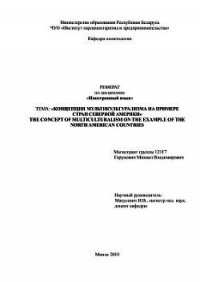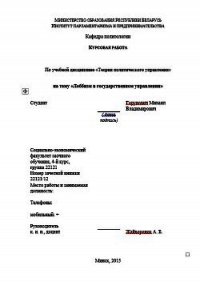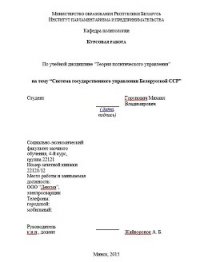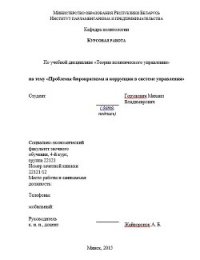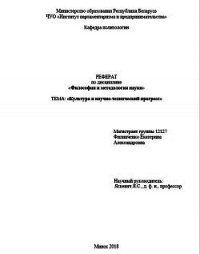Концепция мультикультурализма на примере стран Северной Америки - Горунович Михаил Владимирович (читать хорошую книгу .txt) 📗
Жалоба
Напишите нам, и мы в срочном порядке примем меры.
Концепция мультикультурализма на примере стран Северной Америки - Горунович Михаил Владимирович (читать хорошую книгу .txt) 📗 краткое содержание
Проблема межэтнических отношений, их преимуществ и недостатков в контексте построения государства и обеспечения национальной безопасности является одной из традиционных в политологии. Подходы к целому ряду вопросов, касающихся эффективности управления межэтническими отношениями и уменьшению рисков, связанных с возможными конфликтными проявлениями на межличностном и межгрупповом уровнях внутри многонациональных обществ, разрабатывались и продолжают развиваться.
Опыт Соединенных Штатов Америки как “государства мигрантов”, имеющего очень специфические основы, относительно непродолжительную историю и, тем не менее, задающего тон и импульс формированию современного миропорядка с учетом своего национального опыта государственного строительства, является одним из актуальных объектов исследования. Опыт США по интеграции постоянного потока эмигрирующих в Штаты человеческих ресурсов, по их включению в единую систему действий и решений, касающихся безопасности и развития американского государства и общества, основывается на методологии управления межэтническими отношениями на своей территории и участии США в межэтнических конфликтах практически во всем мире.
Опыт США в управлении вопросами межэтнических отношений, а также решении периодически возникающих в американском обществе конфликтов на почве национализма и межрасовых отношений, нередко связывается с концепцией мультикультурализма.
Сегодня в США и Канаде заканчивается процесс институционализации новой модели интеграции иммигрантов в американскую и канадскую нации. Несмотря на растущее этническое и региональное многообразие, в этих странах удалось выработать национальную идею, вполне успешно консолидирующую мультикультурное общество.
Важными условиями, гарантирующими соблюдение учебными заведениями США и Канады требований мультикультурного образования, являются государственное финансирование учебных заведений за отказ от дискриминационной практики; административные меры по обеспечению равенства образовательных возможностей; десегрегация школ, введение образовательных программ изучения различных языков и культур. Одним из основных условий воплощения в жизнь идей мультикультурного образования является подготовка культурно-компетентного специалиста, способного работать в полиэтническом, мультикультурном обществе, что требует отражения идей мультикультурного образования в учебных заведениях США и Канады.
В США и Канаде популярны суждения, что мультикультурное образование не может быт ограничено рамками самого учебного заведения, а должно осуществляться при сотрудничестве с неправительственными, профессиональными и общественными организациями.
Концепция мультикультурализма на примере стран Северной Америки читать онлайн бесплатно
Министерство образования Республики Беларусь
ЧУО «Институт парламентаризма и предпринимательства»
Кафедра политологии
РЕФЕРАТ
по дисциплине
«Иностранный язык»
ТЕМА: «КОНЦЕПЦИЯ МУЛЬТИКУЛЬТУРАЛИЗМА НА ПРИМЕРЕ СТРАН СЕВЕРНОЙ АМЕРИКИ»
THE CONCEPT OF MULTICULTURALISM ON THE EXAMPLE OF THE NORTH AMERICAN COUNTRIES
Магистрант группы 12117
Горунович Михаил Владимирович
Научный руководитель:
Матусевич Н.В., магистр пед. наук,
доцент кафедры
Минск 2018
CONTENTS
INTRODUCTION
Ideas about the legal and political accommodation of ethnic diversity have been in a state of flux around the world for the past 40 years. One hears much about the "rise and fall of multiculturalism". Indeed, this has become a kind of master narrative, widely invoked by scholars, journalists, and policymakers alike to explain the evolution of contemporary debates about diversity. Although people disagree about what comes after multiculturalism, there is a surprising consensus that we are in a post-multicultural era.
This report contends that this master narrative obscures as much as it reveals, and that we need an alternative framework for thinking about the choices we face. Multiculturalism’s successes and failures, as well as its levels of public acceptance, have depended on the nature of the issues at stake and the countries involved, and we need to understand these variations if we are to identify a more sustainable model for accommodating diversity.
This work will argue that the master narrative:
1) Mischaracterizes the nature of the experiments in multiculturalism that have been undertaken;
2) Exaggerates the extent to which they have been abandoned;
3) Misidentifies the genuine difficulties and limitations they have encountered and the options for addressing these problems.
Before we can decide whether to celebrate or lament the fall of multiculturalism, we need first to make sure we know what multiculturalism has meant both in theory and in practice, where it has succeeded or failed to meet its objectives, and under what conditions it is likely to thrive in the future.
The goal of the work is to identify the most important problems of contemporary multiculturalism, to find out current and historically existing contradictions in the integration process, to define the perspectives of multiculturalism in the nearest future.
1. THE ESSENTIALS OF MULTICULTURALISM
1.1 The misleading model of multiculturalism
In much of the post-multiculturalist literature, multiculturalism is characterized as a feel-good celebration of ethnocultural diversity, encouraging citizens to acknowledge and embrace the panoply of customs, traditions, music, and cuisine that exist in a multiethnic society.
Multiculturalism takes these familiar cultural markers of ethnic groups – clothing, cuisine, and music - and treats them as authentic practices to be preserved by their members and safely consumed by others. Under the banner of multiculturalism they are taught in school, performed in festivals, displayed in media and museums, and so on. This celebratory model of multiculturalism has been the focus of many critiques, including the following:
It ignores issues of economic and political inequality such as problems of unemployment, poor educational outcomes, residential segregation, poor English language skills, and political margalization. These economic and political issues can’t be solved simply by celebrating cultural differences;
Even with respect to the legitimate goal of promoting greater understanding of cultural differences, the focus on celebrating “authentic” cultural practices that are "unique" to each group is potentially dangerous. First, not all customs that may be traditionally practiced within a particular group are worthy of being celebrated, or even of being legally tolerated, such as forced marriage. To avoid stirring up controversy, there's a tendency to choose as the focus of multicultural celebrations safely inoffensive practices - such as cuisine or music - that can be enjoyably consumed by members of the larger society. But this runs the opposite risk of trivialization or Disneyfication of cultural differences, ignoring the real challenges that differences in cultural and religious values can raise;
Multiculturalism may be intended to encourage people to share their customs, but the assumption that each group has its own distinctive customs ignores processes of cultural adaptation, mixing, and melange, as well as emerging cultural commonalities, thereby potentially reinforcing perceptions of minorities as eternally "other". This in turn can lead to the strengthening of prejudice and stereotyping, and more generally to the polarization of ethnic relations;
This model can end up reinforcing power inequalities and cultural restrictions within minority groups. It can therefore imprison people in “cultural scripts” that they are not allowed to question or dispute.
According to post-multiculturalists, the growing recognition of these flaws underlines the retreat from multiculturalism and signals the search for new models of citizenship that emphasize:
1) Political participation and economic opportunities over the symbolic politics of cultural recognition;
2) Human rights and individual freedom over respect for cultural traditions;
3) The building of inclusive national identities over the recognition of ancestral cultural identities;
4) Cultural change / mixing over the reification of static cultural differences.
1.2 Multiculturalism in context
It is important to put multiculturalism in its historical context. In one sense, it is as old as humanity – different cultures have always found ways of coexisting, and respect for diversity was a familiar feature of many historic empires, such as the Ottoman Empire. But the sort of multiculturalism that is said to have had a “rise and fall” is a more specific historic phenomenon, emerging first in the Western democracies in the late 1960s. This timing is important, for it helps us situate multiculturalism in relation to larger social transformations of the postwar era.
More specifically, multiculturalism is part of a larger human rights revolution involving ethnic and racial diversity. Prior to World War II, ethnocultural and religious diversity in the West was characterized by a range of illiberal and undemocratic relationships of hierarchy, justified by racialist ideologies that explicitly propounded the superiority of some peoples and cultures and their right to rule over others. These ideologies were widely accepted throughout the Western world and underpinned both domestic laws (e. g., racially biased immigration and citizenship policies) and foreign policies (e.g., in relation to overseas colonies).
After WWII, however, the world recoiled against Hitler’s fanatical and murderous use of such ideologies, and the United Nations decisively repudiated them in favor of a new ideology of the equality of races and peoples. And this new assumption of human equality generated a series of political movements designed to contest the lingering presence or enduring effects of older hierarchies. We can distinguish three “waves” of such movements:
